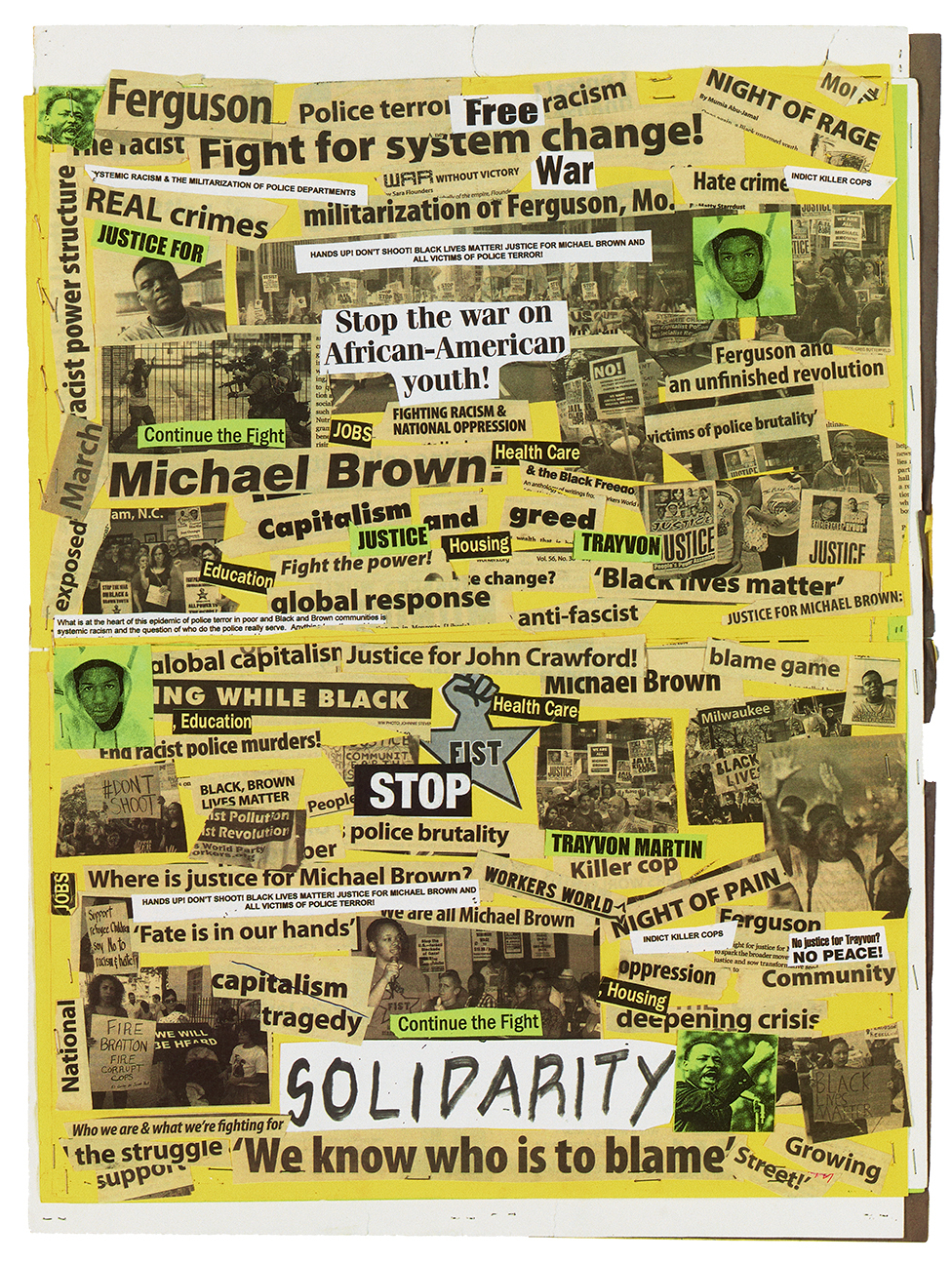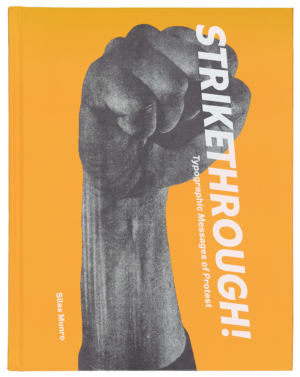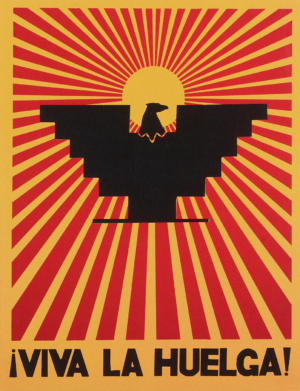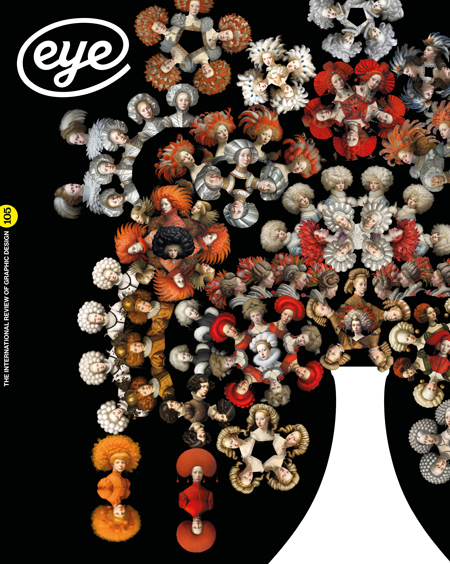Autumn 2023
Call and response
various designers
anonymous designers
Polymode
Sara E. Benjamin
Richard Chavez
Design history
Graphic design
Strikethrough: Typographic Messages of Protest
By Silas Munro, Designed by Polymode, Letterform Archive, $45
This hardback book is the catalogue for the 2022-2023 Letterform Archive exhibition of the same name, co-curated by Silas Munro and Stephen Coles at Letterform’s San Francisco gallery (see Eye 100). The exhibition charted a bold history of socially driven design across a century of protest graphics with a particular focus on typographic expression. Its inception took momentum from 2020’s Black Lives Matter movement, which epitomised the power, anger and agency of words themselves as protest.
Typically, publications that accompany exhibitions are a mere formality. However, Strikethrough manages to become something far more vital and necessary. One part coffee-table art book, one part design history and several parts manifesto, it affirms the power of design not only as a tool in support of the ephemera of social transformation but as the social transformation itself. The book is an inspiration.
Given society’s recent ideological movements and upheavals, Strikethrough feels like a lightning bolt of design advocacy and action. It takes the reader on a blistering journey of typographic resistance, showcased in diligently researched examples and case studies from the nineteenth century to the present. The authors make it clear that the curation both of the show and the catalogue is a political act – that it is impossible to separate art and design from politics and the foundational ideas that our societies are built upon.
And this mode of thinking is evident in the catalogue’s construction. In his acknowledgements, Munro muses: ‘It’s been said that writing is a solitary act. Strikethrough has proven quite the opposite.’ This is a testament to the designers, historians, archivists and members of Letterform Archive and Munro’s studio Polymode, who contributed to Strikethrough’s scope, scale and sheer impressiveness.
Cover of Strikethrough Design: Polymode (Silas Munro, Brian Johnson & Michelle Lamb), 2022.
Top. Sara E. Benjamin’s untitled poster for a Black Lives Matter protest, 2014.

The book’s five core proclamations of Resist, Vote, Strike, Teach and Love, serve as thematic sections, each showcasing work from a variety of mediums while providing historical context and a narrative timeline.
From the wood-type broadsides of the abolition movement in the 1800s, Emory Douglas and the protest graphics of the 1960s and 70s American Black liberation movement, to new forms of protest via augmented reality, the pace is thrilling.
And though some of the subjects in the book will already be well known to designers, there has been a clear effort to expand the collection of work beyond white, Euro-American ‘cisgender’ narratives of design and typography.
This includes the fascinating silkscreens of Sister Corita Kent (see Eye 35), the anonymous brilliance of the ‘ERA YES’ mark (for the Equal Rights Amendment), the groundbreaking aesthetic of 1920s Black queer magazine Fire!!, and the digital fonts of A Queer Year of Love Letters by nonbinary alphabet artist Nat Pyper.
Although Strikethrough casts a wide net of cultures and perspectives, work from the United States predominates, due perhaps to the exhibition’s location and the US’s unique place within the wider context of protest graphics and typography.
The civil rights and anti-war movements coincided with an explosion of American innovation in advertising and marketing. This period produced some of the most iconic images in our collective history, but also the commercial methodologies that would later be applied to socially driven design.
¡Viva La Huelga! [Long Live the Strike], a poster for the United Farm Workers, ca. 1965. This features an Aztec eagle, the symbol of Mexican pride designed by activist Richard Chavez in 1962.

There is still plenty here from an international perspective: from the graphic anti-imperialism of Ospaaal (the Organization of Solidarity of the People of Asia, Africa and Latin America, see Eye 16), the Atelier Populaire of Paris, and the designers and artists associated with the Arab Spring to the See Red Women’s Workshop of 1970s London (see Eye 93). There are a few iconic examples of typographic resistance that are conspicuous by their absence, such as The Art Group’s work for Extinction Rebellion (see ‘Truth works’ in Eye 100).
Such omissions aside, Strikethrough is an affecting and poignant read, marked by stunning photography and dynamic typography. The display typeface, Equals, was especially created for the book by type designer Tré Seals (Vocal Type).
In his curatorial statement, which opens the book, Munro speaks of the collected works as a ‘typographic call and response’, inspired by the call and response in musical patterns imported into the US via the transatlantic slave trade, a tradition that fostered both connection and civic participation. But the powerfully brilliant achievement of Strikethrough itself may represent such a call for present and future designers, typographers, activists and students (for whom this book should be required reading). What forms their response will take is a source of hope and optimism.
Strikethrough is a clarion call for those of us in the industry to examine our convictions and strive to create change with our work. Just as the title suggests, perhaps these words will form the basis of what we choose to challenge, uplift, transform, discard and ultimately, to strike through.
Greg Bunbury, designer, podcaster, lecturer, London
First published in Eye no. 105 vol. 27, 2023
Eye is the world’s most beautiful and collectable graphic design journal, published for professional designers, students and anyone interested in critical, informed writing about graphic design and visual culture. It is available from all good design bookshops and online at the Eye shop, where you can buy subscriptions and single issues.
Links
Buy ‘Strikethrough’ at the Eye magazine bookshop
Letterform Archive
Vocal Type foundry
‘Letterform Archive: Objects of Inspiration’ in Eye 100
‘All you need is love: pictures, words and worship’ in Eye 35
‘Art directing the opposition’ in Eye 16
‘Activism follows anger’ in Eye 93
‘Extinction Rebellion: Truth works’ in Eye 100

